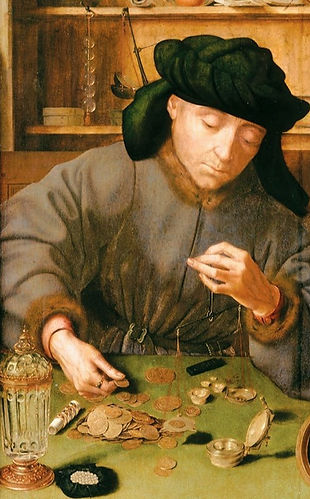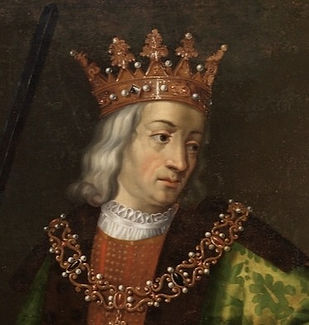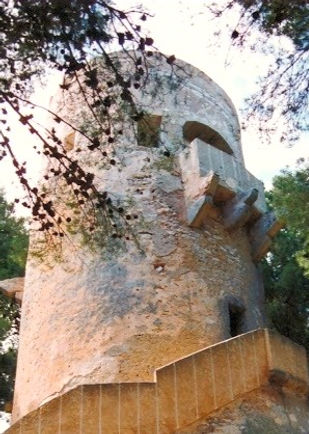History of Jávea

“Between the Sucro and Carthage there are three small cities of the Massaliotas, not far from the river. Of these, the most important is Hemeroscopeion, which has on its rock a temple of Artemis, very famous. Sertorius used Hemeroscopeion as a base to command the sea, because it is strong and suitable for piracy and visible from afar to navigators. It is called Dianion, that is, Artemision. Nearby are rich iron mines and the small islands of Planesia and Plumbaria, and further inland a lagoon with a circumference of 400 stades.” (According to the Spanish version by A. Schulten)
Third book of the 17 volumes of Stabon's Geographika (written between 29 and 7 BC)
The history of Spain as a country isn't very old. It was divided into several kingdoms (Portugal, Castile, Aragon, and Navarre) until the Moorish stronghold was finally conquered in the 16th century. From that moment on, the Spain we know today was created. But that's another topic...
As you can read on the left of these lines, we can't talk about Jávea in this history without first mentioning Denia. Although here they call it Hemeroscopeion, and also Dianión.
The oldest record of occupation in this municipality is truly ancient. No less than 30,000 years old. And no, I haven't added any extra zeros. If you can go see the various caves in the Montgó mountain, you'll be able to enjoy some of the cave art, which is thought to be around 5,000 years old.
Those who roamed here back then were nomadic tribes who enjoyed a comfortable existence thanks to the abundant hunting, fishing, and farming opportunities. Today, a study shows that the microclimate here is one of the best on the planet.
Later, different cultures claimed Jávea due to its privileged location. Romans, Greeks, Arabs, pirates, French... I don't remember in what order, but I do know that they all wanted to keep it.


Jaume II



The first document referring to Jávea dates back to 1258. It is a purchase contract stating that Carroz's nephew purchased six plots of land in the Jávea Valley. However, it doesn't begin to appear as an inhabited place until 1301.
The first documents mentioning it on paper date back to the reign of James II in the 14th century. He prohibited the inhabitants from continuing to build the tower, in order to concentrate all their forces in Denia, since the hamlet of Jávea depended on it administratively and judicially.
In 1308, the king ordered the construction of the defensive bastion to be completed, hurrying it along under the threat of being moved to Denia.
_Since 1321, the inhabitants of our town began to demand the establishment of a court, but without ceasing to depend on Denia.
In 1396, after continuous disputes over jurisdiction, Jávea finally managed to establish its municipal boundaries.
_In 1403, we already had our own council and a total of 204 charters required to pay the “Morabati” (tax on the monastic life, in order to guarantee the stability of the monetary system).
Going back in history, and to explain our famous Moors and Christians festival, when the Romans left after staying for about 600 years, this place remained uninhabited until the Muslims arrived around the 8th century. In 1244, they reconquered what was then called Xabiga. Little by little, the Moorish empire was being overthrown. James I of Aragon converted it back to Christianity. The festival is celebrated in July and commemorates the time when, through a peaceful pact, written in Spanish and Arabic between Don Alfonso and Habu Abdala Ibn Hudayl, and many "gifts," the Moors ceded the land.
For a long time, and I mean several centuries, this town was marked by the constant threat of Barbary pirates. Because of them, they were forced to build walls around the town, which is located about 2 km from the coast. Narrow streets and houses were built close together so they could escape over rooftops and terraces.
Watchtowers along the coast warned of their arrival. You can still see the remains of some of them today.
Between 1810 and 1812, the French War raged. While Denia hosted Napoleonic garrisons, Jávea resisted them. During this period, there was widespread looting and atrocities by soldiers against the population. Fortunately, nuns, women, and children were still able to escape through the "higher parts" of the streets.

Did you know that carob seeds inspired the Greeks to establish them as a unit of weight in jewelry?

_In the War of Spanish Succession, we sided with the Bourbons. And as a reward, we were granted a concession to export goods and fruits. This became the economic engine of our town for several generations. First with wheat, and later with raisins. The cultivation of wheat, almond trees, vines, olive trees, and carob trees was, for a long time, Jávea's main activity.
_When the pirates were defeated, the complete demolition of the walls began, which was completed in 1873.
With the construction of a National Parador in 1969, Jávea gained popularity, attracting more tourists each year. Today, it is a top tourist destination.